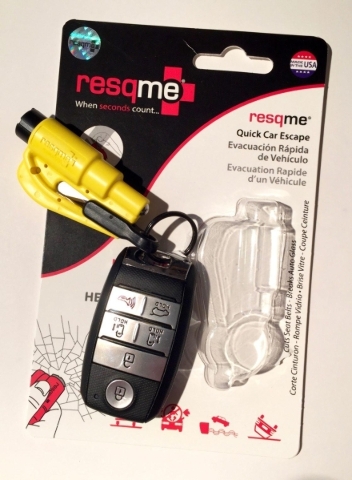Electronic car door locks: friend or foe?

A reader wrote: “I have a question about automobile egress. If I’m driving with the doors locked and I lose all power as the result of a crash, would I be able to get out? Am I locked in? If so, what should I carry in the car in order to get out, assuming I am physically able to do something about it?”
If there’s anything (besides price) that makes us nervous about new cars, it’s probably electronic controls. While nobody would go back to carburetors, distributors and breaker points, and electronics have been helping prevent skidding since the ’70s, there’s something faintly scary about handing the steering wheel or the brakes over to a swarm of electrons and a nest of wires.
That goes for door locks too. The thunk that reverberates through the car as the doors lock — we can’t do just one any more, they all lock — signals that while we think we’re in charge, a higher power is at work. The door latch may be a mechanical linkage, but it gets locked electrically. Few cars still have plungers in the doors, to push or pull to lock or unlock, and in those that do, the plungers are part of an electrical system, not a mechanical one.
So it’s a good question: If the power fails, do my doors fail too? I asked several carmakers.
Chrysler, Dodge, Jeep and Fiat vehicles are designed to automatically unlock, post-crash, so occupants can just pull the door handle. If an air bag deploys, EARS (Enhanced Accident Response System) also turns on the car’s interior lights, to help rescuers see occupants, and shuts off the fuel to the engine to reduce the risk of fire.
Cars from VW, Jaguar and Land Rover have electronic locks with mechanical overrides, so whether the power is on or not, when you pull the handle the door should open. (If the child safety locks are on, rear-seat passengers will need someone outside to open their doors.)
BMWs, among the most electronic of cars, have separate circuits from the battery to the powertrain and to the body electrics. In an accident bad enough to trigger an airbag, a pyrotechnic device cuts the electrical connection to the powertrain, to shut down the engine and the fuel pump, and at the same instant the doors unlock automatically and the four-way flashers come on.
Finally, according to the Car Doctor at AAA Northeast: “In most but not all cars the door locks are mechanical, so even if the lock switch won’t work, the door handle or lock button will. Shut off the ignition and — if the doors don’t automatically unlock anyway — see if the locks can be released manually. Also check your owner’s manual for information about overriding electronic door locks. If you’re still concerned about this, carrying a tool to break a window might be prudent.”
So any car door should open even if the power is out — so long as it hasn’t been jammed in a wreck. In that case a window-busting device might be just the thing.
When I was a boy, a car drove into the lake in our neighborhood. The occupants drowned, the story went, because they couldn’t open the doors and the power windows shorted out in the water and jammed. (After that, my father only bought cars with hand-crank windows — a feature that went extinct with windshield sun visors and bias-ply tires. And manual door locks.)
We can’t push a door open underwater until the car fills up, to equalize the pressure; better to slide out through a window instead. So I also asked my car contacts whether their power windows would work underwater — a silly question, really, as electricity and water never play well together, and anyway we’re as likely to get hit by lightning as wind up in a submerged car.
Still, this brings us back to shattering a window with a handy-dandy tool by resqme. It works great. With a single snap of the spring-loaded steel punch, side glass crumbles to bits and the window just disappears. It doesn’t work on windshields, though, because that glass is laminated to a plastic membrane, so road debris can’t shatter it.
Now, however, the safety experts have decided that “ejection mitigation” is key to survivability in a car crash — that is, keep the occupants inside. (That’s why car doors lock automatically.) And so more and more side windows are also being made of laminated glass, and good luck trying to shatter your way through one of those. As a side note, certain cars now have such beefy roof pillars—for rollover protection that some Jaws of Life can’t cut through them.
Electric door locks? They’re not really an issue.











